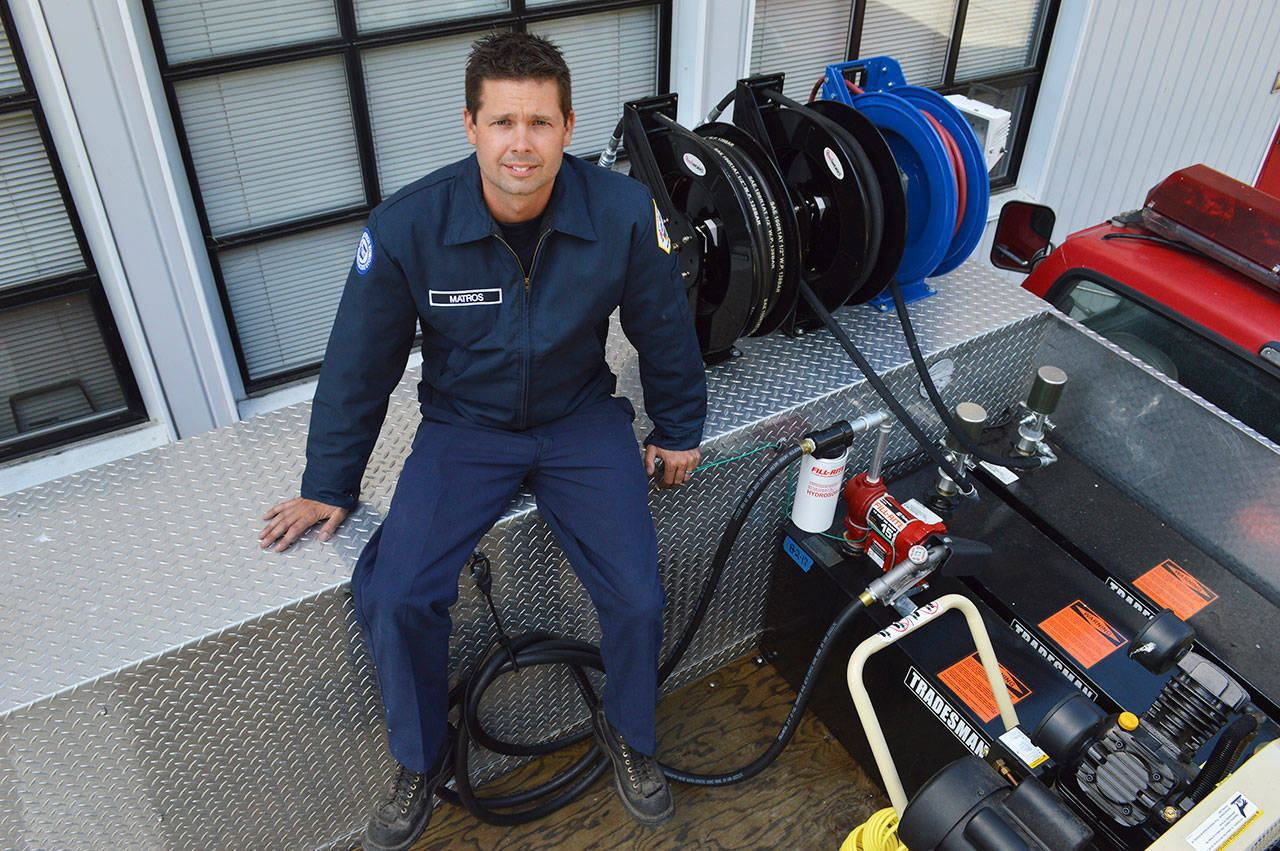When a fire engine breaks down, it can’t just be taken into the nearest auto shop.
Central Whidbey Fire &Rescue used to have to wait for an outside contractor to come and fix their engines, prolonging the “out-of-service” time of that vehicle. Now the shop comes to the engine.
Firefighter and mechanic Michael Matros retrofitted a retired, gutted rescue truck in order to service and repair engines and other fire district vehicles onsite.
“It’s a rolling toolbox; I have everything I need in there,” said Matros.
The bed of the truck contains an air compressor, two 50-gallon tanks of either oil or diesel and 50-foot hoses that connect to those tanks. Doors open on the side to reveal drawers and shelves filled with all the tools an automotive mechanic would typically have.
Before Matros was hired almost four years ago, the fire district had neither a mechanic nor this type of vehicle. The truck took Matros around three months to complete, but during that time he had other duties as a mechanic, training to become certified to work on emergency vehicles and training and duties related to firefighting.
“All that stuff has been a blur,” he said.
When he was hired, Matros was put on a five-year plan to complete his emergency vehicle technician (EVT) certification and his firefighter II training. He finished both in just under four years.
EVT certification required that he pass 26 tests that take about two hours each to complete. At the same time, he was attending Emergency Medical Technician school and completing other firefighting training.
The completion of the service truck has made fire engine maintenance much more efficient, said Matros. For instance, before the oil tanks were installed in the truck, Matros had to carry six, one-gallon oil canisters for each vehicle.
He said the truck has meant less out-of-service time on the apparatus, “henceforth helping the community that we serve.”



